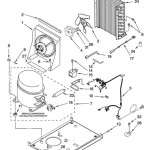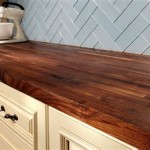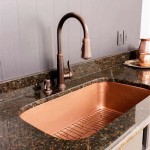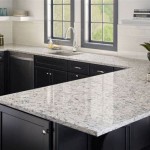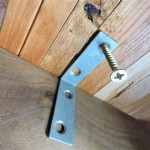How Much Epoxy Resin Do You Need for a Countertop Project?
Epoxy resin countertops have gained significant popularity due to their durability, aesthetic appeal and the ability to customize them with various colors, pigments, and embedded objects. Successfully creating an epoxy countertop requires careful planning, including accurately calculating the amount of epoxy resin needed. Underestimating the required amount can lead to an incomplete project, while overestimating can be wasteful and costly. Therefore, accurately determining the necessary epoxy volume is crucial for a successful and cost-effective countertop installation. This article will explore the factors influencing epoxy resin consumption and provide a guide for calculating the required amount for different types of countertop projects.
Several factors contribute to the amount of epoxy resin required for a countertop. These factors include the dimensions of the countertop, the desired thickness of the epoxy layer or layers, and the presence of any embedded objects that displace epoxy volume. The type of epoxy used also influences the calculation, as different epoxy formulations may have varying densities or application recommendations.
The dimensions of the countertop, primarily the length and width, directly impact the surface area that needs to be covered with epoxy. Larger countertops will naturally require more epoxy than smaller ones. Equally important is the desired thickness of the epoxy layer. A thicker layer offers greater durability and a more luxurious appearance, but it also consumes a larger volume of epoxy resin. For countertops incorporating embedded objects, such as stones, glass, or decorative items, these elements effectively reduce the overall volume of epoxy required. The volume of these objects must be estimated and subtracted from the total epoxy needed.
Understanding the different types of epoxy resins and their typical application thicknesses is crucial to estimate volumes accurately. Different epoxy formulations are designed for specific applications and possess varying viscosities and working times. For example, a self-leveling epoxy is often used for creating a smooth, glossy surface, while a deep-pour epoxy is ideal for encapsulating thicker objects or creating river tables. These two types will have different recommended application thicknesses. Understanding the manufacturer's instructions for the specific epoxy resin being used is paramount.
Understanding Epoxy Resin Coverage Rates
Coverage rate is a critical concept in determining the amount of epoxy resin required. Coverage rate refers to the surface area that a specific volume of epoxy will cover at a given thickness. It is typically expressed in units such as square feet per gallon (sq ft/gal) or square meters per liter (sq m/L) at a specified thickness in mils or millimeters. Understanding coverage rate is fundamental to calculate epoxy needed. Manufacturers usually provide coverage rate information in their product data sheets. This information is generally based on ideal conditions, such as a perfectly flat and smooth surface.
Coverage rates vary based on the type of epoxy formulation, its viscosity, and the substrate's surface texture. For example, a high-viscosity epoxy used on a porous surface will have a lower coverage rate compared to a low-viscosity epoxy applied to a non-porous surface. Porous surfaces absorb more epoxy, requiring a higher volume to achieve the desired thickness. The method of application can also influence the coverage rate. Using a brush or roller may result in a different coverage rate compared to using a squeegee or self-leveling technique. Consult the manufacturer's documentation for the specific product being used to understand how these variables can affect the calculated epoxy needed.
For example, a particular epoxy might have a coverage rate of 12 sq ft per gallon at a thickness of 1/8 inch (approximately 125 mils). This means that one gallon of epoxy will cover 12 square feet of surface area at that specific thickness. If the desired thickness is increased to 1/4 inch (approximately 250 mils), the coverage rate will be halved to 6 sq ft per gallon. Accurate knowledge of the coverage rate is essential for precise epoxy volume calculation.
Calculating Epoxy Resin Volume: A Step-by-Step Guide
Calculating the necessary epoxy resin volume involves a series of steps, starting with determining the dimensions of the countertop and proceeding through adjustments for embedded objects and desired thickness. These calculations require a systematic approach to ensure accuracy and minimize waste.
The initial step involves measuring the length and width of the countertop in inches or feet. These dimensions are then used to calculate the total surface area using the formula: Area = Length x Width. For example, a countertop that is 6 feet long and 2 feet wide has a surface area of 12 square feet. If the countertop is not rectangular, it may need to be divided into smaller, easier-to-measure sections, and the areas of these sections added together to find the total surface area. For circular countertops, use the formula Area = πr², where 'r' is the radius of the circle.
The next step is to determine the desired thickness of the epoxy layer. This is typically specified in inches or millimeters. Common thicknesses for epoxy countertops range from 1/8 inch to 1/4 inch, depending on the desired look, durability, and the presence of embedded objects. Convert the thickness to feet (by dividing inches by 12) to maintain consistent units within the calculation. For example, a thickness of 1/8 inch is equivalent to 0.0104 feet.
Next, calculate the required volume of epoxy resin using the formula: Volume = Area x Thickness. Using the previous example of a 12 square foot countertop with a desired thickness of 0.0104 feet, the required volume is 12 sq ft x 0.0104 ft = 0.1248 cubic feet. This unit of volume typically needs to be converted to gallons for practical use. One cubic foot is approximately equal to 7.48 gallons. Therefore, the required volume in gallons is 0.1248 cubic feet x 7.48 gallons/cubic foot = 0.93 gallons.
If the countertop incorporates embedded objects, the volume of these objects must be estimated and subtracted from the total epoxy volume. These objects can include stones, glass, shells, or other decorative items. Measure the dimensions of each object and calculate its volume using appropriate formulas (e.g., Volume = Length x Width x Height for rectangular objects, Volume = (4/3)πr³ for spherical objects). Add up the volumes of all embedded objects to obtain the total displaced volume. This volume should then be subtracted from the total epoxy volume calculated earlier.
It is always advisable to add a safety margin of approximately 10-15% to the calculated epoxy volume to account for wastage, uneven surfaces, or any unforeseen factors. This ensures that there is sufficient epoxy resin to complete the project without running short. In the example above, a 10% safety margin would add 0.093 gallons to the required amount, resulting in a total required volume of approximately 1.023 gallons.
Factors Affecting Epoxy Resin Consumption
Beyond the fundamental calculations outlined above, several external factors can significantly influence the actual quantity of epoxy resin consumed during the application process. These factors include the substrate's porosity, ambient temperature, mixing efficiency and the application method itself. Being aware of these factors and taking appropriate precautions can help in achieving more accurate estimations and minimizing waste.
The porosity of the countertop surface plays a significant role in epoxy resin consumption. Porous materials like wood or concrete tend to absorb more epoxy compared to non-porous surfaces like glass or metal. Priming the porous surface with a sealant before applying epoxy can help to reduce absorption and minimize the amount of epoxy required. A suitable sealant will create a barrier that prevents the epoxy from soaking into the substrate, maintaining a more consistent thickness and coverage rate. Consider applying multiple coats of sealant and ensuring it is fully cured before proceeding with the epoxy application.
Ambient temperature and humidity can also influence epoxy resin's viscosity and curing time. Warmer temperatures typically lower the viscosity of the epoxy, making it flow more easily and potentially resulting in a thinner layer than intended. High humidity can affect the curing process and may lead to surface imperfections. Following the manufacturer's recommended temperature and humidity ranges during application is crucial. If the temperature is too low, the epoxy may become too viscous, making it difficult to spread evenly. Maintaining a controlled environment can help to ensure consistent epoxy application and reduce variability in consumption.
Proper mixing of the epoxy resin and hardener is essential for achieving the desired properties and optimal consumption. Inadequate mixing can lead to uncured spots or inconsistencies in the final finish, requiring additional epoxy to rectify. Using calibrated mixing containers and following the manufacturer's recommended mixing ratios carefully is critical. Mix the epoxy thoroughly but gently to avoid introducing air bubbles, which can affect the appearance and structural integrity of the countertop. Take the time to ensure a homogeneous mixture before pouring the epoxy onto the countertop.
The method of application also affects epoxy consumption. Pouring and spreading the epoxy using a squeegee or notched trowel can provide a more controlled and even distribution compared to brushing or rolling. Self-leveling epoxies are designed to spread evenly on their own, but they still require careful monitoring to ensure uniform coverage. When applying epoxy, work in a systematic manner, ensuring that all areas are coated to the desired thickness. Overlapping passes can help to avoid thin spots or gaps. Using the right tools and techniques can minimize waste and result in a more consistent and professional-looking countertop.

How Much Do Epoxy Countertops Cost The Dedicated House

Carrara Marble Epoxy Countertop Kit Stone Coat Countertops

How To Install Epoxy Over Old Countertops Ultimate Guide Stone Coat Youtube

Stone Coat Countertops 64 Oz Carrara Marble Gloss Finish Countertop Kit Table Top Epoxy For Resurfacing And Refinishing Sctcgcmehgk The Home

Advantages Disadvantages Of Epoxy Countertops

2025 Epoxy Countertops Cost Pros Cons And Comparison

Advantages Disadvantages Of Epoxy Countertops

How Much Epoxy Do I Need To Cover My Floor Countertop Or Wall Counter Top

Use Epoxy To Coat Existing Countertops Make Them Look Like Real Stone Step By Explained

Epoxy Countertops A Beginner S Guide
See Also

